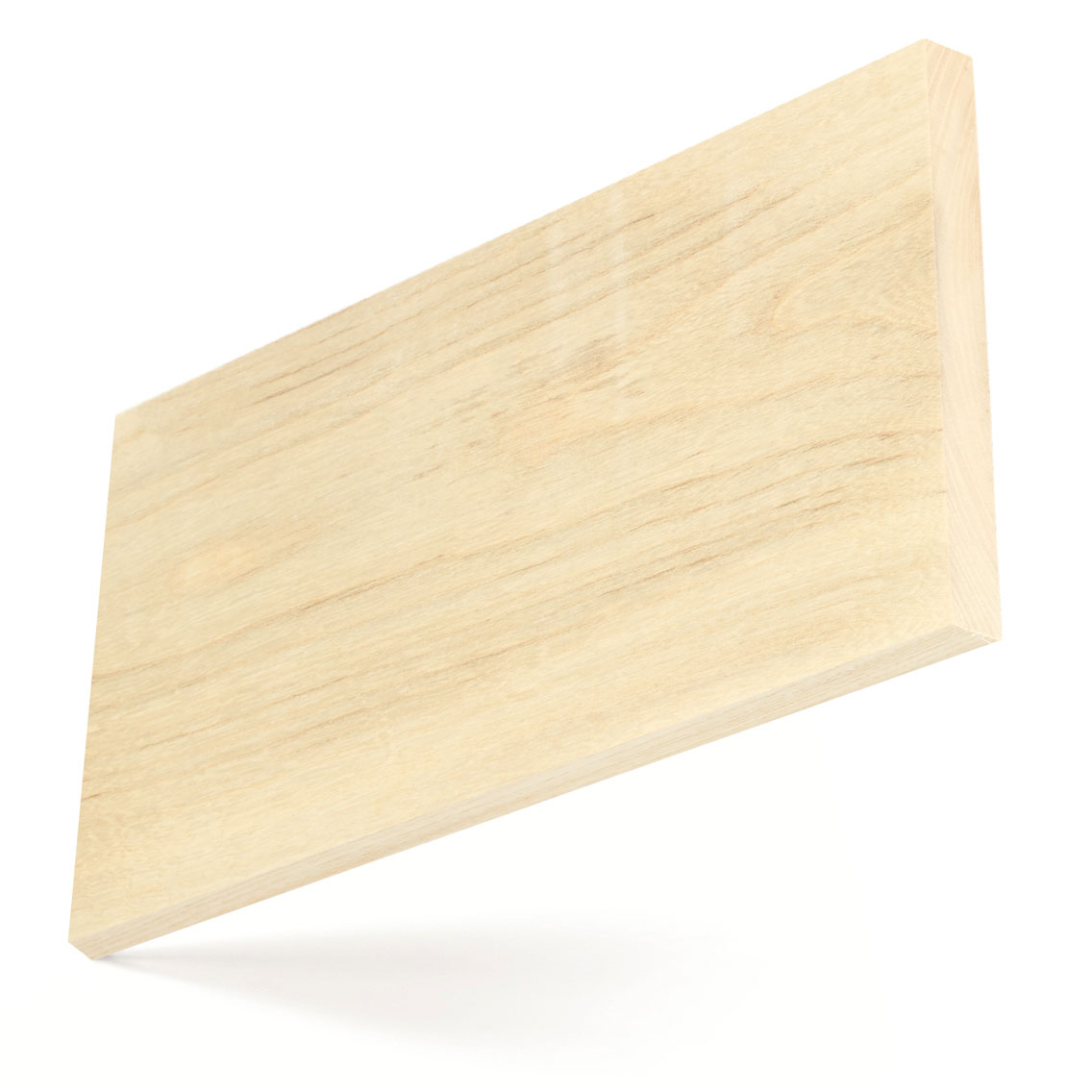ต้นแฮกเบอร์รีทั่วไป
ต้นแฮกเบอร์รีอเมริกันเป็นไม้เนื้อแข็งอเมริกันที่โดดเด่น ค่อนข้างจะไม่เป็นที่รู้จักภายนอกสหรัฐอเมริกา
ชื่อภาษาละติน
Celtis occidentalis
ชื่อทั่วไปอื่น ๆ
ชูการ์เบอร์รี

การกระจายตัวในป่า
ต้นแฮกเบอร์รีอเมริกัน สามารถโตได้ในดินหลายประเภท ดังนั้นจึงค่อนข้างที่จะแพร่หลายไปทั่วสหรัฐอเมริกา ต้นไม้นี้ยังเติบโตได้ทั่วไปในป่าที่เกิดใหม่ซึ่งพบได้มากในรัฐตอนกลางและตอนใต้ อย่าสับสนกับมิสซิสซิปปี้แฮกเบอร์รี (C. tenuifolia) ที่เจริญเติบโตทั่วไปใกล้กับอ่าว ต้นแฮกเบอร์รีโดยทั่วไปสามารถเจริญโตเป็นต้นสูงใหญ่และตั้งตรง พร้อมกับมีกิ่งก้านเล็กน้อยได้ถึง 70 ฟุตที่สามารถทำเป็นไม้แปรรูปได้อย่างชัดเจน
การเติบโตของป่า
ข้อมูลจาก FIA แสดงให้เห็นว่าในสหรัฐอเมริกา มีปริมาณการเติบโตต้นแฮกเบอร์รี่อยู่ที่ 138 ล้าน ม3 คิดเป็น 1.0% ของปริมาณการเติบโตของไม้เนื้อแข็งทั้งหมดในสหรัฐอเมริกา ต้นแฮกเบอร์รีเจริญเติบโตได้ 4.3 ล้าน ม3/ต่อปี ในขณะที่ผลผลิตอยู่ที่ 1.2 ล้าน ม3/ต่อปี ปริมาณสุทธิ (หลังเก็บเกี่ยว) เพิ่มขึ้นเป็น 3.1 ล้าน ม3 ในแต่ละปี อัตราการเติบโตของต้นแฮกเบอร์รีนั้นมีจำนวนมากกว่าอัตราการเก็บเกี่ยวในรัฐใหญ่ ๆ ที่ทำการผลิต
LCA Tool
seconds
วัสดุที่มีอยู่
ต้นแฮกเบอร์รีนั้นสามารถใช้งานได้ในจำนวนไม้เลื่อยแปรรูปที่จำกัดมาก ในเกรดส่งออก และโดยส่วนมากแล้วในรูปแบบของวัสดุแบบบางขึ้น (4/4"และ 5/4") และผลิตขึ้นมากที่สุดในสหรัฐอเมริกาตอนใต้ แผ่นไม้อัดก็อาจจะหาได้จากซัพพลายเออร์เฉพาะทาง
คำอธิบายเกี่ยวกับไม้
ไม้ของต้นแฮกเบอร์รีนั้นมีความคล้ายกับต้นเอล์ม แต่ต่างกันด้วยน้ำหนักที่ค่อนข้างเบาและไม่แข็งแรง ลายเนื้อไม้หยาบบนเนื้อไม้ที่ไม่ปกติอาจจะเป็นเส้นตรงและบางทีก็เชื่อมต่อกัน แต่มีพื้นผิวละเอียดแบบเดียวกัน มีส่วนที่แตกต่างกันเล็กน้อยระหว่างกระพี้ไม้กับแก่นไม้ที่มีสีค่อนไปทางเทาอมเหลืองจนถึงน้ำตาลอ่อนโดยทั่ว
คุณสมบัติเชิงกลไก
เนื้อไม้ของต้นแฮกเบอร์รีนั้นค่อนข้างแข็ง หนัก และทนทานต่อการดัดได้ดี แต่ไม่ทนต่อแรงดัน ไม้นี้มีคุณสมบัติต้านแรงกระแทก และดัดด้วยไอน้ำได้ดี แต่มีความแข็งต่ำ
-
0.53
ความถ่วงจำเพาะ (12% M.C)
593 kg/m3
น้ำหนักเฉลี่ย (12% M.C)
13.50%
ปริมาณการหดตัวเฉลี่ย (เขียว ถึง 6% M.C)
76.535 MPa
โมดูลัสของการแตกออก
8,205 MPa
โมดูลัสของความยืดหยุ่น
37.509 MPa
แรงอัด (ขนานกับลายเนื้อไม้)
3,914 N
ความแข็ง
ที่มีน้ำมัน/ไม่มีน้ำมันปรากฏ


สมรรถนะ
- ต้นแฮกเบอร์รีเหลาและดัดง่าย แต่ก็สามารถที่จะยึดกับตะปูและสกรูได้ ไม้นี้ย้อมสีและขัดเงาให้อยู่ในมาตรฐานที่น่าพอใจ ถึงแม้ไม้นี้ทำให้แห้งง่ายด้วยการสึกกร่อน แต่ไม้นี้มีคุณสมบัติการหดตัวสูงและไวต่อการเคลื่อนไหวในสมรรถนะ ต้นแฮกเบอร์รีนั้นไวต่อเชื้อราย้อมสีทั้งก่อนและหลังการเข้าเตาเผา ดังนั้นการซื้อไม้แปรรูปในสหรัฐอเมริกาจึงต้องมีการขัดมัน (ไส) ก่อนการขนส่ง
- ไม้ชนิดนี้ไม่ทนต่อการผุพังของแก่นไม้ และค่อนข้างทนต่อการรักษาเนื้อไม้
การใช้งานหลัก
ไม้แฮกเบอร์รีโดยทั่วไปมักใช้สำหรับทำเครื่องเรือน และตู้ในห้องครัว งานไม้กรอบประตูหน้าต่างตกแต่งภายในและการหล่อ และไม้นี้ก็สามารถใช้แทนไม้แอชได้